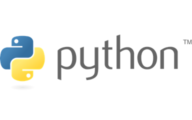Python advance level questions are included below. Following includes Interview Questions for Experienced Programmer:
Expand All Questions Collapse All QuestionsQuestion 1: How will you check if a class is subclass of another class?
Answer: You can check if a class is a subclass of another class in Python using the issubclass() function. For example:
issubclass(DerivedClass, BaseClass)
This will return True if DerivedClass is a subclass of BaseClass and False otherwise.
Question 2: How will you check if an object (python variable) is an instance of a class?
Answer: You can check if an object is an instance of a class in Python using the ininstance() function. For example:
isinstance(obj, MyClass)
This will return Ture if obj is an instance of MyClass, and False otherwise.
Question 3: What is finalize in python and how it is used?
Answer: In Python, finalize is a function from the weakref module used to register a cleanup function that will be called when an object is about to be destroyed. It helps manage resources like file handles or network connections. Here’s a simple usage example:
import weakref
class MyClass:
def __init__(self, name):
self.name = name
def cleanup(obj):
print(f"Cleaning up {obj.name}")
obj = MyClass("example")
weakref.finalize(obj, cleanup, obj)
del obj # Output: Cleaning up example
Question 4: What is empty class in Python?
Answer: An empty class in Python is a class that does not contain any attributes or methods. It is defined using the class keyword followed by the class name and a colon. You can use the pass statement to indicate that the class body is intentionally left blank. Following code creates an empty class with no attribute or method.
class EmptyClass:
pass
Question 5: Is it possible to call parent class without its instance creation?
Answer: Yes, it is possible to call a parent class method without creating an instance by using the class name to directly call the method. This is typically done with class methods or static methods.
class Parent:
@classmethod
def class_method(cls):
return "Class method called"
@staticmethod
def add(x, y):
return x + y
class Child(Parent):
pass
print(Child.class_method())
print(Child.add(1,2))
Question 6: How can you access parent class members in child class?
Answer: You can access parent class members in a child class using the super() function or by directly referencing the parent class. For example:
class Parent:
def greet(self):
print("Hello from Parent")
class Child(Parent):
def greet(self):
super().greet() # Using super()
Parent.greet(self) # Directly referencing the parent class
c=Child()
c.greet()
Question 7: What is inheritance and its types in Python?
Answer: Inheritance in Python allows a class to inherit attributes and methods from another class. Types include:
Single Inheritance: One parent class, one child class.
Multilevel Inheritance: A class derived from another derived class.
Multiple Inheritance: One child class, multiple parent classes.
Hierarchical Inheritance: Multiple classes derived from a single parent class.
Hybrid Inheritance: A combination of two or more types of inheritance. Like the diamond inheritance.
Question 8: What is the __main__ function in python and how do we invoke it?
Answer: The __main__ function in Python is used to execute code only when the script is run directly, not when imported as a module. You invoke it using:
if __name__ == "__main__":
print("place your python code here to run")
Question 9: List some static analysis tools for python.
Answer: Several tools can be used for static analysis of Python code, including:
Prospector: Aggregates multiple linters into a single interface
Pylint: Checks for coding standards and errors.
Mypy: Performs static type checking.
Pyflakes: Detects syntax errors and undefined names.
Question 10: What is GIL in python?
Answer: The Global Interpreter Lock (GIL) in Python is a mutex that protects access to Python objects, preventing multiple native threads from executing Python bytecodes simultaneously.
Question 11: What is pickling and unpickling in python?
Answer: In Python, pickling is the process of converting a Python object into a byte stream, which can be stored in a file or transmitted over a network. Unpickling is the reverse process, where the byte stream is converted back into a Python object. This is useful for saving program state or data persistence.
Example:
import pickle
# Example data
data = {'name': 'Alice', 'age': 30, 'city': 'Wonderland'}
# Pickling the data
with open('data.pkl', 'wb') as file:
pickle.dump(data, file)
# Unpickling the data
with open('data.pkl', 'rb') as file:
loaded_data = pickle.load(file)
print(loaded_data)
Question 13: What are the most common built-in modules of python?
Answer: Python comes with a rich set of built-in modules. Here are some of the most commonly used ones:
- os: Provides functions for interacting with the operating system.
- sys: Provides access to some variables used or maintained by the interpreter and to functions that interact strongly with the interpreter.
- math: Offers mathematical functions like trigonometry, logarithms, etc.
- datetime: Supplies classes for manipulating dates and times.
- json: Enables parsing and creating JSON data.
- re: Provides support for regular expressions.
- random: Implements pseudo-random number generators for various distributions.
These modules help streamline various tasks and enhance the functionality of your Python programs.
Question 14: What is reduce method in Python and how it is used?
Answer: Similar like map and filter methods, reduce methods apply a function given in first argument to iterable given in second argument but returns a single value in place of an iterable. This method is not available built-in but in functools library. Following is an example:
from functools import reduce
list = [1,2,3,4,3,5]
# to find the product of all elements we can write
product = reduce(lambda x,y: x*y, list)
print(product) # 360
Question 15: What is the difference in PUT and PATCH method in REST api?
Answer: PUT replaces the complete object with new object while PATCH changes a part of object.

